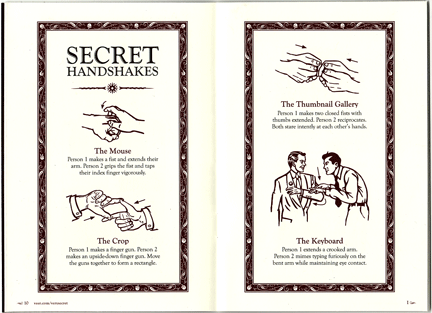
Embrace Design Early and Often For Success
 There’s a longstanding industry term for the visual aspect of packaging: “Decoration.” Unfortunately, this arcane term represents everything wrong with the old way of thinking — that design is merely a façade to “fancy something up.” If a brand views design as the exterior of their packaging, they’re likely missing out on the deeper connection design has to a brand . Good design can inform the way the products are organized through to how the information is meant to be revealed at retail.
There’s a longstanding industry term for the visual aspect of packaging: “Decoration.” Unfortunately, this arcane term represents everything wrong with the old way of thinking — that design is merely a façade to “fancy something up.” If a brand views design as the exterior of their packaging, they’re likely missing out on the deeper connection design has to a brand . Good design can inform the way the products are organized through to how the information is meant to be revealed at retail.
Too often we see great packaging containing lousy products, and vice versa. So few are able to deliver on the promise of the packaging. Personal care products share an intimate relationship with you. They are on your body all day! If it seems as if the people making the product have never spoken to the people designing the packaging, you’re right on the money.
Why is this so? It’s usually a strict adherence to “the way things were” and an unwillingness to deviate from processes that have been in place for decades. Unwillingness to take risks is likely the main reason so few companies adopt more modern working practices that could foster a more creative outcome. Most are too caught up in the day-to-day to innovate. Most are very beholden to corporate hierarchy to appreciate good that could come from asking fundamental questions.
The Old Way is Broken
Too often, companies are in the manufacturing-centered mindset. In the beauty industry, manufacturer-centered scenarios happen when a company owns a lab and/or the manufacturing equipment . Because they’re in the business of making things, they can easily introduce new products with rapid succession. Marketing departments must then create stories around the products, and the “decoration” is then applied. The result is a number of similar products that seem to solve the same problem, and no clear sense from a consumer-perspective as to how the lines should be shopped. Retailers become confused, and even if the products are good, these brands become relegated to lower shelves. We have seen this happen countless times.
A “Design Thinking” Approach to Go Hand-in-hand with Product Development
Design Thinking, is literally a school of thought, pioneered by Stanford Univerity. It can help inform the formulation of product itself, the delivery systems, distribution methods all the way through what is traditionally seen as the visual part of design. The overall process breaks things down into 5 main stages: Empathize, Define, Ideate, Prototype, and Test. Where this differs from a manufacturing-driven approach is that it starts as being customer-focused .
The first phase, Empathy, is about knowing your customer, so much so that you’re feeling them. To do so you need to understand their needs and emotional drivers. Just because you want to make something does not mean they want to buy it. Having a designer involved at the earliest stages of a product or brand development is the best way to ensure that the result will be well-organized, meaningful, and relevant to your target audience. Because this approach is rooted in human needs, it helps ensure that the final product answers human needs. How novel!
Small vs Big Brands
Bringing a new product to market is a daunting task for a company of any shape and size. Smaller ones (including startups) often lack the resources and connections that larger brands have. Yet, they often benefit from having less defined specialized roles. This allows for a higher degree of collaboration. Larger brands can often afford to introduce new products to test the market. However, their siloed, “top-down” structure rarely fosters a process that awards innovation or discovery along the way.
What People Are Really Buying
For CPGs in the beauty space, the role of design cannot be overestimated. Although it may be that the creams, gels, liquids, foams that consumers initially need, what keeps them coming is the image, message and PROMISE of the packaging. That is really what is being sold. In order to do the heavy lifting, the packaging (shape, color, messaging, product naming, brand name) must connect on an emotional level to the consumer.
Limit the Number of Moving Parts
Having the same creative team involved throughout ensures a singular vision will be achieved. Too many times brands feel they need someone to first design the logo, then hire a separate packaging designer, then a web designer, and then a social media planner. This is recipe for conflicting visions, redundant talents, and a guarantee for more time and management of all the team members. Having a well-rounded core team of experts in your “vertical” will ensure that you are maximizing the team’s resources, bringing in others only when it’s necessary.
Architecture: It’s the Building Block of All Great Brands
As we’ve established, a designer’s role is not merely visual. The design of the product line’s organization structure is essential. This is called Brand Architecture. The clarity by which a brand is organized is essential to consumer’s comprehension of the brand, they way it’s marketed, how new products are added, packaging type — the list goes on. Too often a brand starts with a small offering and then expands and expands without much regard for the naming structure, packaging type, etc. This typically results in an array of confusingly named products, many of which share overlapping attributes. These brands usually fall out of favor from retailers who find that they can’t properly feature the new products because things have become too confusing.
Clear naming structures and hierarchies need to be established. There is never one “right” or “wrong” approach, it’s very dependent on the brand. Some choose to be organized by ingredients, others by steps in the regimen, others by strength or performance-level. The way that this is then implemented can take any number of ways… through color, shape, symbols, words, materials — the list goes on. It takes careful consideration of the options and works best when there is input from all team members from all the varying disciplines. For example, knowing your options with regard to packaging type. Let’s say you want to differentiate one grouping from another by way a color-coded system for caps. Is this possible for jars as well as the bottles? Is it practical for reordering? Can you afford the minimums? What if some products are boxed, will this system be apparent on at retail?
Decisions made early on can see themselves through very deep ways throughout the entire line, and can be costly to redo later. The organizational design of the brand architecture is essential to retailers and sales reps, as well as the all-important website structure. Ideally the website should reflect this brand architecture. Interestingly, many brands are forced to confront longstanding organizational when they redo their website. Wheat might’ve been seen as a “sprucing-up” often becomes a self-realization that there are underlying issues which have vexed the brand — and consumers — for years. The real test is whether brands are willing to address the underlying product organization issues by simultaneously changing packaging issues, or continue to “dress up the pig” by not addressing them. If this situation doesn’t seem familiar to you, then you should congratulate yourself on being a rarity amongst your competitors. The reality is that many brands suffer from some form of line confusion and the costs of not addressing the underlying issues will eventually outweigh the merits of addressing them.

Case Study: Avivi
MSLK was involved at a very early stage with a beauty oil brand. We reviewed their product offering conducted a series collaborative workshop that involved discovery, naming and overall strategy — all before any design was carried out. Our key insight was to leverage the avocado-based carrier oil as the main story. From there, we chose a name that was inspired by this finding, which in turn provided guidance for all marketing. “Avivi” was chosen because it suggests “avocado” and the word “vitality.”
Design thinking was employed on the product formulations in order to allow for scents that were appealing to the nose, and provided interesting imagery. MSLK helped create a naming system that gave the products inspiring names, conveying each product’s end-benefit (“Invigorate” and “Happiness”). MSLK was also helped create an innovative technique of dipping the glass bottles in a plastic resin which helps protect the products from breaking as well as create a distinctive visual. This visual “dip” inspired the design of the website and other marketing materials.

